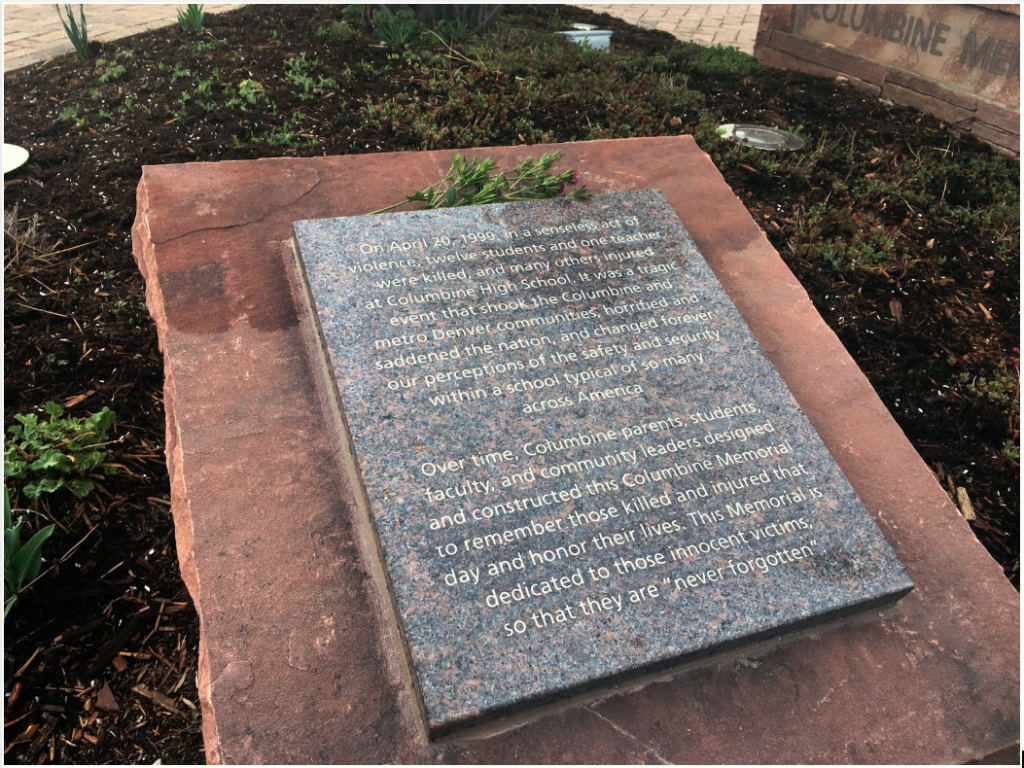Guest Commentary: The Columbine Tragedy: 20 Years Later

By Rick J. Kaufman, APR
Executive Director of Community Relations and Emergency Management
Bloomington, Public Schools
On April 20, 1999 in a senseless act of violence, twelve students and one teacher were killed and many others injured at Columbine High School. It was a tragic event that shook the Columbine and metro Denver communities, horrified and saddened the nation, and changed forever our perception of the safety and security within a school typical of so many across America.
So reads the opening lines on the plaque dedicating the Columbine Memorial on the tragedy’s 10th Anniversary. As we mark the 20th Anniversary this month, what have we learned?
I’ve often been referred to as an expert in school safety. I am not so much of an expert as I am a lifelong student in search of answers to fleeting questions. I’m also keeping a promise to the Columbine victims and families that if our work can save lives, then the souls lost to school violence will not be in vain.
I’ve compiled the following lessons learned from the past 20 years of #keepingthepromise.
- Tend to victims and victims’ families. Timely action and communication is necessary to stem the anguish and anger in the wake of the crisis. All communication should be focused on accomplishing this goal initially.
- Failure to plan is a plan to fail. If you wait until a crisis to create a plan, you’re too late. Being prepared for the unexpected and having a comprehensive crisis communications plan are fundamental to any crisis response. Planning provides strategies to react quickly and be at the forefront to define the incident.
- Communication is foundational. If the top priority in a crisis is public safety, then the primary objective for crisis communication should be to prevent harm to stakeholders. This starts with engaging stakeholders in understanding what to do in an emergency BEFORE it happens.
- Align communication with response efforts. Do what you know to be right, and say what you know to be true is critical to all crisis response efforts and maintaining stakeholder support.
- Be first to share bad news. Delivering the news when bad stuff happens is never easy. Take the lead and acknowledge what happened, what you know about it and specific actions you’re taking to respond and correct. Define the story or others will define it for you.
- There’s no “I” in team. As darkness settled over the Columbine community, just hours after the tragedy that changed the trajectory of so many lives, it became apparent we needed help. We had an incredible team of communications professionals and support staff, and an unflinching leadership team. It wasn’t enough to manage the crisis of this magnitude.
- Know your limits. It’s easy to delude oneself into thinking you can do it all. You can’t. A crisis is a defining moment. It isn’t a time to hold steadfast to a belief that you’re the only one who can do the task. Knowing when to step aside and relinquish control is an art.By making the call for outside assistance, we allowed ourselves to be vulnerable. We also benefited from the communications professionals who brought their own set of skills and perspectives, and showcased their abilities in a unique collaboration for a greater good.
- Leaders are made, they are not born. A leader sets the emotional tone and example in any crisis response. True leaders provide a visionary guidance, and demonstrate these four simple actions:
- Every decision has consequences. Whatever you do or don’t do, whatever you say or don’t say during the course of a crisis response will have intended and unintended consequences. History is replete with embarrassing verbal gaffes. In an era when a school crisis makes headline news and public anger can be easily ignited through social media, your reputation management requires strong values and courage by leaders, and effective communication.
- No simple solution to school safety. There’s no single method, product or program in use today that is fail-safe. School safety is a multi-layered approach that involves everyone. People and policies are more important than just hardware and software to promote a culture of safety in schools.
- Human connections remain the most important. Face-to-face communication is still the most effective. We tend to forget this with today’s technological sophistication and the smartphone generation. Communication is all about human relationships. That won’t change.
Within days we were joined by colleagues from Colorado and the nation. We banded as group to put shattered lives, a school and community back together. We bore the brunt of intense criticism for shielding students and staff from the crush of media and others who wanted to “touch the tragedy.” Through it all we established a professional standard that humanized a profession long thought to only spin the good news.
— Be Present: Lead, don’t manage. Effective leaders create a safe environment for staff to make decisions and take risks. After all for most of us, dealing with a crisis is new territory.
— Be Visible: Show support for those affected and inspire confidence that the school family, the district and community will get through any terrible event.
— Be Personal: Speak from the heart throughout the crisis and demand transparency.
— Be Connected: We’re in this together, we’ll get through it together, and each of us needs the other to get through the crisis. A true leader is one who forges a path together with his or her team.
Parting Thought
Over time, Columbine parents, students, faculty and community leaders designed and constructed this Columbine Memorial to remember those killed and injured that day and honor their lives. This Memorial is dedicated to those innocent victims so that they are “never forgotten.”
These are closing lines on the plaque dedicating the Columbine Memorial.
We have never forgotten. We never will.
Have we learned enough to close this long, sad chapter? Time will tell. If not, another school and community will bear the pain and heartache of innocence lost.
Rick J. Kaufman, APR is the executive director of community relations and emergency management for Bloomington (MN) Public Schools. He is a nationally respected consultant, trainer and author on crisis management and communication. He served as the Crisis Response Team lead for the Columbine High School tragedy in 1999, and continues to work with school districts across the country to manage and recover from school violence incidents, including Broward County Public Schools and San Bernardino City Unified Public Schools. Mr. Kaufman is the author of the Complete Crisis Communication Management Manual for Schools (2016, NSPRA).
